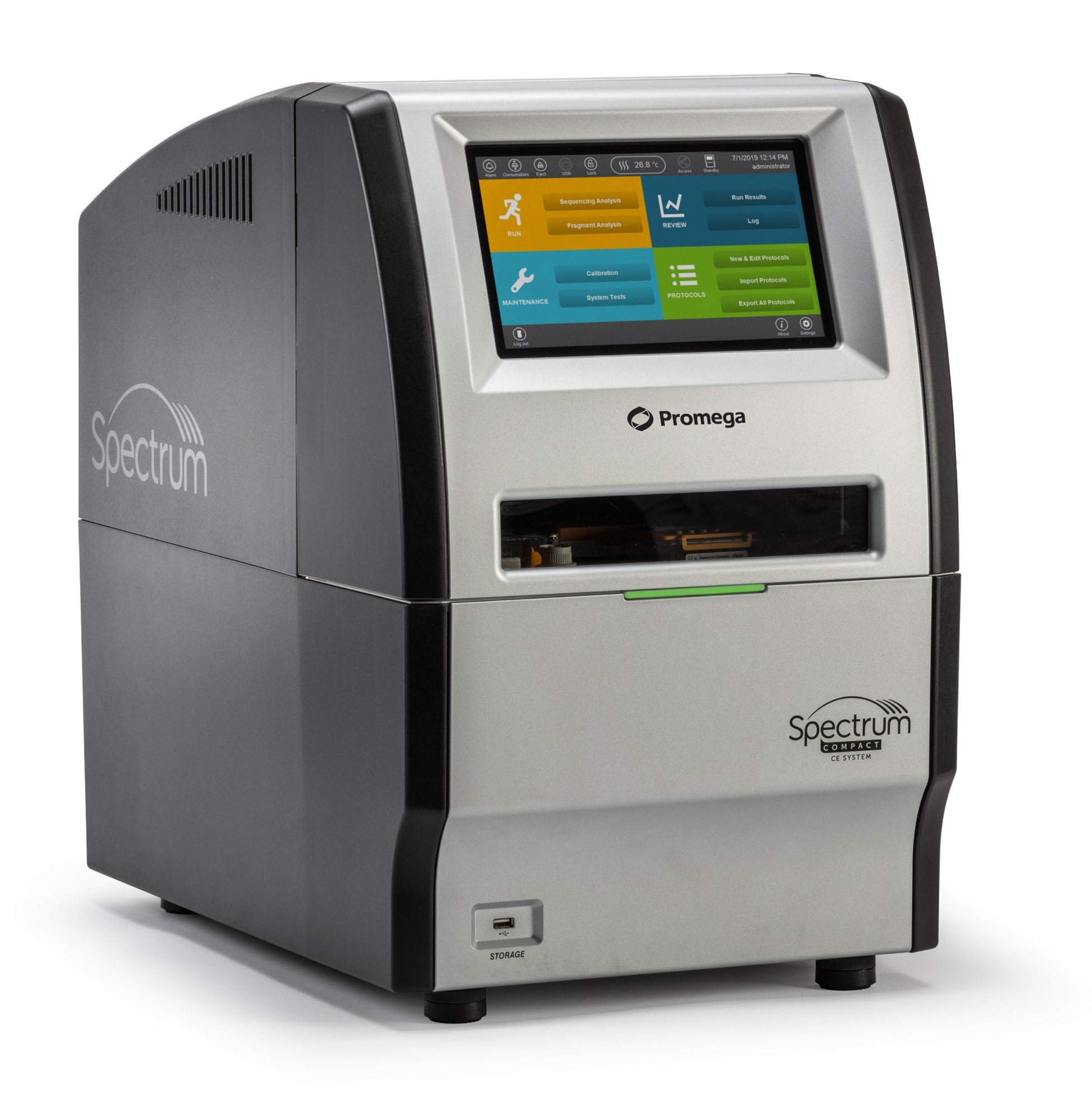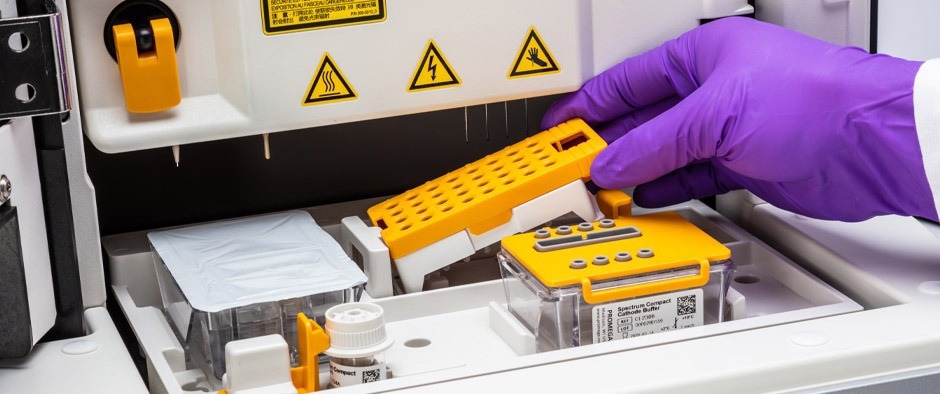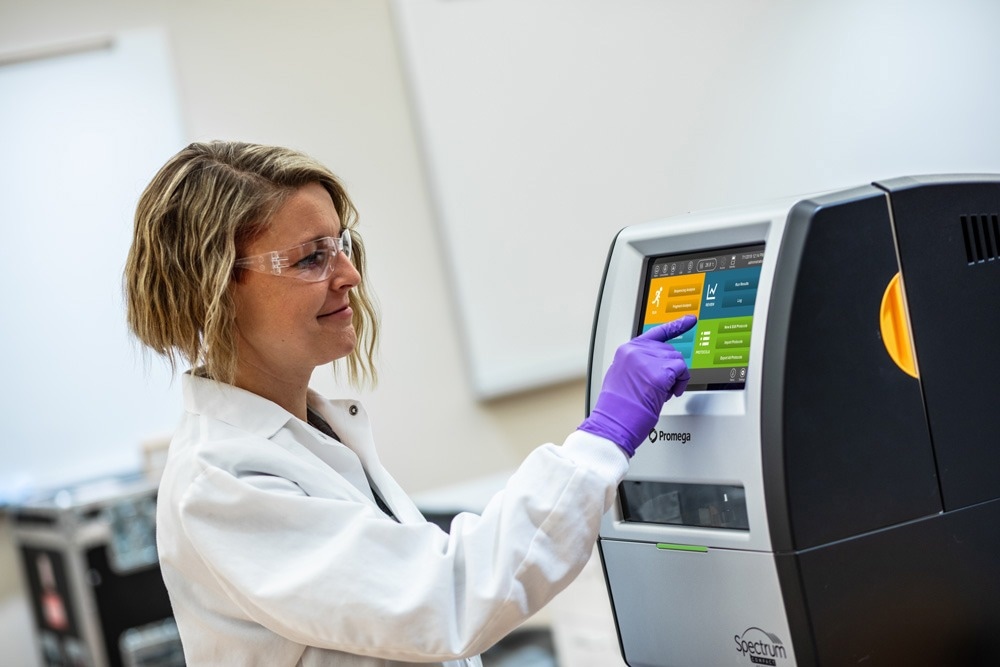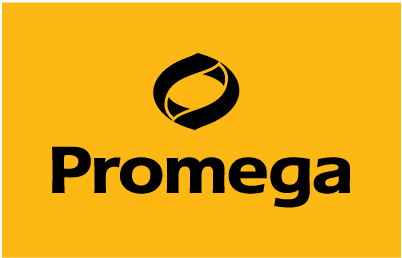In this interview, News Med is talking to Gabriela Saldanha about DNA Fragmentation and Sanger Sequencing.
What are Sanger sequencing and DNA-fragment analysis? Where are these analyses used?
Sanger sequencing by capillary electrophoresis is the gold standard for DNA sequencing, even with the advent of next-gen sequencing (NGS). The assay and its interpretation are simple and targeted and are best used for DNA fragments that are 75‒1,000 bases long. The current best practice in many labs is to confirm NGS results with Sanger sequencing, and Sanger sequencing is the most cost-efficient method for sequencing single samples.
Fragment analysis separates and analyzes fragments of DNA amplified by PCR. Short tandem repeat (STR) analysis is a subset of fragment analysis and, in the past, has most often been used in forensic and paternity analyses. However, STR analysis can also support non-forensic applications such as cell line authentication, MLPA, microsatellite analysis and mixed-sample deconvolution.

Image Credit: Promega
What instrumentation is required for Sanger sequencing and fragment analysis? Will most researchers have these instruments in their labs, or will they outsource the work?
A single-base resolution capillary electrophoresis system is standard equipment for carrying out these analyses. In the past, many labs would send samples to core labs for analysis because the equipment was often too big or expensive for labs that only needed to process a handful of samples.
To solve that problem, we developed the Spectrum Compact CE System, an automated benchtop 4-capillary electrophoresis instrument that can process as few as four samples or as many as 32 samples in a single run with no consumable waste. With the Spectrum Compact, labs can carry out their own Sanger sequencing or fragment analysis on-demand.
What value does the Spectrum Compact CE System provide to a lab?
One of the huge advantages of this instrument is that it is personal. An individual can walk into the laboratory and, with minimal training, change all the consumables, select which chemistries they want to use and perform the experiment. It is an incredibly flexible and affordable system that is accessible to everyone in the lab – it democratizes the use of the instrument in the laboratory. By eliminating the need to send samples out to core facilities, the Spectrum Compact also helps labs reduce costs-per-sample and control their own timelines.
THINK SPECTRUM COMPACT
Image Credit: Promega
What is different about the Spectrum Compact CE System compared to other genetic sequencers?
The Spectrum Compact CE System is low-throughput by design. We have heard from many scientists who do not process enough samples to justify purchasing a higher-throughput instrument, so this instrument was engineered to meet those specific needs.
What application areas use the Spectrum Compact CE System?
The Spectrum Compact is the solution for academic, clinical research and forensic laboratories looking to take genetic analyses into their own hands. The instrument supports applications as varied as microsatellite instability research, mixed sample analysis, forensic STR analysis and cell line authentication.
What is cell line authentication, and how does the Spectrum Compact CE System support this application?
Misidentification of cell lines is a major problem in biological research. When scientists are working with cell lines, it is important that the identity of the cells are regularly authenticated to ensure that the research outcomes are valid. Many funding agencies and journals now require scientists to carry out cell line authentication to submit grants or manuscripts. STR profiling is considered the best practice for authenticating cell lines. The Spectrum Compact CE system can perform cell line authentication using standard STR profiling chemistries, like the GenePrint® 24 system. This instrument and STR kit combination meet the ANSI/ATCC ASN-0002-2021 guidelines for authentication of human cell lines.

Image Credit: Promega
What consumables are needed to use the Spectrum Compact CE System?
The instrument is compatible with existing Sanger sequencing chemistries and 4-, 5- and 6-dye STR kits from Promega and other companies.
The plug-and-play consumables make the instrument extraordinarily simple to set up and run. Installation is simple, and the format prevents contamination and spilling. Every single person who touched the instrument during internal training commented on how easy the consumables were to install.
The consumables are also separate, which offers more efficiency, flexibility and sustainability compared to other instruments that require you to change every consumable at the same time.
How easy is the interface and software to use? Is that also something anyone in the lab can work with?
The Spectrum Compact Control Software provides a simple user interface with a clear display of useful features, including run set up, consumable status and array usage information, as well as system maintenance reminders. Users can monitor run progress, and view analyzed results while a run is in progress. You can also export files in formats that are compatible with commercially available data analysis software such as GeneMarker® HID for Spectrum Systems, GeneMarker®, Mutation Surveyor® and GeneMapper®.

Image Credit: Promega
What sort of support can Spectrum Compact CE System users expect from Promega?
There is a one-year, extendable warranty with preventative maintenance included with purchase, as well as on-site installation and training. Users also get access to Promega’s team of scientists who can support chemistry validation of new workflows, applications training and additional preventative maintenance.
What is next for the Spectrum Compact CE System?
An upcoming update of the control software in quarter four of 2022 will allow customers even greater flexibility with consumables and chemistries. For more information on the Spectrum Compact CE System, visit the product page.
About the Author:
Gabriela Saldanha is a Strategic Commercialization Manager in the Genomic Solutions Portfolio at Promega. Gabriela's career spans over 25 years in the laboratory and in product development, strategy and implementation related to nucleic acid amplification, expression analysis and genotyping, more recently leading the ProDye Terminator Sequencing System and the Spectrum Compact CE System launch and commercialization. One of her passions to is sharing how cell line authentication is necessary to preserve the integrity of cell lines.
About Promega

With a portfolio of more than 3,000 products covering the fields of genomics, protein analysis and expression, cellular analysis, drug discovery and genetic identity, Promega is a global leader in providing innovative solutions and technical support to life scientists in academic, industrial and government settings.
Promega products are used by life scientists who are asking fundamental questions about biological processes as well as by scientists who are applying scientific knowledge to diagnose and treat diseases, discover new therapeutics, and use genetics and DNA testing for human identification.